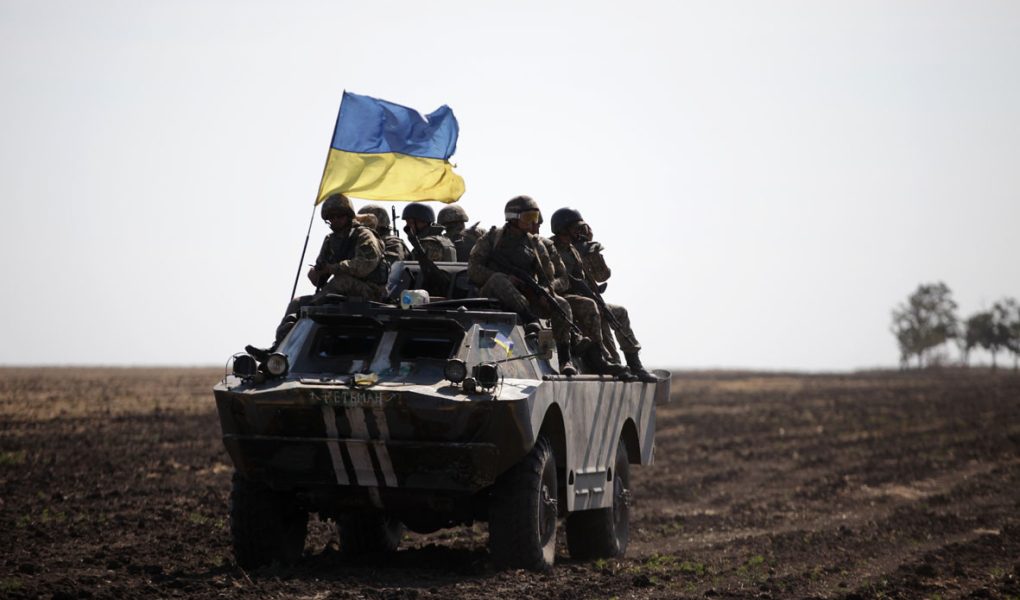One year has passed since Russia invaded Ukraine, launching a war of inter-state violence that pits two relatively technologically advanced countries against one another. Therefore, some view it as an example of “the future battlefield,” particularly given the extensive use by both sides of UAVs and drones of various types. In addition, the conflict demonstrates the clear change in the aerial threat that is widespread in the world today.
The war in Ukraine is an opportunity for countries that are liable to face similar scenarios to study and prepare for such eventualities. For Israel, this is a unique opportunity: with Iran considered its greatest threat, Tehran’s involvement in a conflict in Europe allows an in-depth examination of one aspect of Iranian capabilities and weaknesses.
Iranian involvement in the conflict emerges from in its special relations with Russia, and translates into Iran’s supply to Russia of various military technologies, particularly armed UAVs, as well as operational knowledge and the assistance of experts, some of whom work from Russian territory. Meanwhile, in recent months Russian industries have made use of Iranian suicide UAVs (the Shahed 136 model), which operate relatively autonomously and are capable of cruising to a coordinate via GPS system and striking it with 40 kg of explosive material.
These are relatively primitive means, low cost, and simple to operate; some were even downgraded intended to allow their export from Iran disassembled, with assembly on the ground. Despite the low level of accuracy of these UAVs in comparison to their Western counterparts, for the Russians they are an adequate solution to their need to attempt to erode Ukraine’s resilience by damaging electrical and water infrastructure, as well as inflicting intentional injury and death on civilians. To date, the widespread use of these systems has not led to Russia’s desired strategic achievement. Nonetheless, the campaign in Ukraine demonstrates ways of waging war that Israel is liable to face that include various UAVs, an (inferior) alternative to an air force for nations that are subject to sanctions or that lack in resources. Their use is relevant to multiple threat levels: terror, limited conflict, and inter-state conflict. From Israel’s perspective, Ukraine offers a demonstration of the limited technological capabilities of exported Iranian weapons on the one hand, and implications for the battlefield on the other, including the ability to damage civil infrastructure, military forces, and civilians.
Israel should be concerned by the strength and pace of production demonstrated by the Iranians, despite the international sanctions against Iran. Compounding this is information about Iran’s export capacity and the future effects of the knowledge it continues to gain and the partnerships it forges. Indeed, with the Russian use of Iranian weapons, the Iranians are acquiring operational knowledge regarding the limitations and advantages of their technologies. For Israel, the primary concern is the fact that it will be targeted by these systems; indeed, some are already operational in various ways, whether directly from Iran or by its proxies in various locations in the Middle East and along Israel’s borders, including by Hamas and Hezbollah. What is of even greater concern is the assumption that suicide UAVs are a step on the path to cruise missiles – which have greater accuracy and capacity to inflict damage.
The fighting in Ukraine also shows how non-Western powers tend to use unmanned weapons – in a total inversion of how Western democracies use similar technologies, largely with the intention of minimizing damage and harm to civilians by means of improving the accuracy of their systems. The way that Russia uses these technologies does not respect international law in particular or human life in general, as proven by the deadly and indiscriminate attacks on the Ukrainian home front. While the weapons have not scored strategic gains, the future of hundreds of such UAVs in combination with heavy barrages of rockets in the early days of fighting are liable to pose difficult problems for the Israeli defense systems.
In the context of the events in Ukraine, a number of issues require Israel’s urgent attention, particularly the need to upgrade detection, interception, and defense capabilities, and the need to seize emerging opportunities. The IDF, for example, must continue to prevent the transfer of Iranian technologies in Israel’s environs in the framework of the campaign between wars. Furthermore, the knowledge that it is not possible to completely prevent armament of the other side requires Israel to upgrade its interception capabilities significantly in relation to UAVs and drones as a new layer requiring targeted handling within the totality of Israel’s air defenses. Hence the importance of creating a reliable “view of the airs[pace” via use of all existing detection resources. In addition, Israel must change the approach that has prevailed until now of coping with a lone target: the defense system must prepare to cope with the threat of large masses (perhaps even swarms) of UAVs or drones launched at Israel simultaneously with rockets and additional means, primarily during the first days of fighting.
Given the difficulty of supplying resources for developing systems for each separate threat, there is a need for an interception system that can deal with all the threats simultaneously and possesses the flexibility and rapid adaptation to meet the nature of the changing objectives. To this end, the Ministry of Defense must increase its purchasing budget and the speed at which it acquires new systems and integrates them into existing systems. Attention must also be paid to integration between systems and the implementation of artificial intelligence capabilities, which will assist with early detection and decision making as regards interception. This change of approach and integration stand to yield innovative added value.
Israel must also continue studying the paces of Iranian production and adapt its interception capability as much as possible, including via future laser systems, as well as its ability to replenish its stock of interceptors. This aspect is urgent given recently disclosed intelligence indicating Russian and Iranian intentions to build a joint factory in Russia that will enable production of some 6000 UAVs a year. With the need for rapid response in routine and in emergencies, Israel must also include the decision making ranks that authorize opening fire or interception.
Israel is required to adapt its home front alert systems to the nature of the threat. Given that the situation on the home front is expected to be different and more challenging than in the previous combat rounds with Hamas, Israel must clarify to the relevant parties and primarily to citizens themselves the future implications of differential interception policies (whereby not all targets will be intercepted due to cost savings or a lack of ammunition), in addition to the inability to intercept completely heavy barrages launched simultaneously, in the case of a widespread conflict (e.g., fighting on the northern front). In tandem, the security establishment and civil systems are in urgent need of improved ability to defend and reconstruct the home front, as well as critical infrastructures. The security establishment must also expand research enabling detection of future threats in order to reduce the reaction times to them.
Joining these numerous and demanding requirements are opportunities for Israel. These include a unique opportunity to improve Israeli preparedness based not a specific inquiry or investigative commission, but rather on conclusions drawn from actual fighting by others against technological capabilities used by Israel’s enemies. Israel also has the opportunity to highlight internationally that Iran is not just a potential nuclear problem and an actual cause of regional instability, but also an exporter of dangerous weapons that affects global proliferation of dangerous advanced technologies that are likely to reach countries and terrorist organizations. Emphasizing this aspect of the Iranian threat is liable to strengthen the demand to intensify the sanctions against Iran that would inhibit its actions even a little. This is especially important in light of the expiration of the UN Security Council arms embargo.
Given the emerging international recognition of the threat of UAVs in general and Iranian UAVs in particular, and as a threat that is not confined to the Middle East, Israel is likely to find opportunities to collaborate with additional countries and create new destinations for Israeli industry exports. For example, one unsolved challenge for Israel and other Western nations is the need to create systems and doctrines for defending maneuvering ground forces from UAVs and drones. This is an opportunity to collaborate with allies, as well as to enlist force buildup measures in general to form partnerships. Overall, the demonstration of the Iranian threat in Ukraine underlines the importance of strengthening regional cooperation, which is critical not only to Israel, given the need for intelligence cooperation. This concerns the challenge implicit in early detection of UAVs and drones, primarily for the purposes of preparing to handle threats during routine times and not only during periods of fighting.
In conclusion, the fighting in Ukraine, which saw widespread use of Iranian UAVs, exemplifies the strengthening of the existing threat. We are witnessing a change in scope and intensity, as well as use of these technologies, at times indiscriminate and lethal, by parties that do not respect international law. This substantial challenge requires an in-depth understanding of the change and rapid, efficient adaptation of Israeli preparations for any future threat situation.
Maj. Gen. (res.) Amikam Norkin is a Distinguished Fellow at JINSA’s Gemunder Center for Defense and Strategy. He was Commander of the Israel Air Force, 2017-2022. In 2015-2017 he was head of the Planning Directorate in the General Staff. He retired from the IDF after 38 years of service. Liran Antebi is a senior researcher at INSS, and manages the Advanced Technologies and National Security program, including the study of artificial intelligence and national security.
Originally published in The Institute for National Security Studies.

